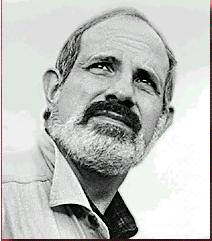|
|
|
 Occupation: Director, screenwriter
Occupation: Director, screenwriter Awards
AwardsMaster of the psychological thriller, De Palma has consistently demonstrated a fluent, inventive cinematic style. Sometimes criticized as a mere imitation of Alfred Hitchcock, De Palma's work, though it pays homage to Hitchcock, differs strikingly in subject matter and technique. Similarly criticized for portraying graphic violence, De Palma responds that he is incorporating Eisenstein's theory of montage as conflict, that "film is violence." Stylization acts to aesthetically distance De Palma's violence so that it becomes a visual effect rather than a naturalistic detail.
De Palma began making films as a student, first at Columbia, later at Sarah Lawrence. In the early 60s, a short, WOTAN'S WAKE (1962), won him several awards. His first feature films, THE WEDDING PARTY (produced 1966, released 1969), GREETINGS (1968) and HI, MOM! (1970), were low-budget affairs, now best known for early screen appearances by Robert De Niro and Jill Clayburgh. Beginning with his commercial breakthrough, CARRIE (1976), De Palma's work began to deal with recurrent themes and narrative patterns. The narrative frame of the dream/nightmare brackets both DRESSED TO KILL (1980) and CASUALTIES OF WAR (1989). Many of his films portray a failed attempt to rescue a female character, as most tragically portrayed in BLOW OUT (1981). De Palma's fascination with the dual role of the gifted young person as a heroic ideal and outsider is illustrated in CARRIE and THE FURY (1978). A subtext of family romance and oedipal conflict underlies the psychological power of De Palma's vision. Such elements as the search for the father, repressed incestual desire and sibling rivalry appear in several of his films. The complex narrative structures of OBSESSION (1976) and THE FURY examine these themes with particular force. De Palma also explores the dynamics of sadomasochism and voyeurism in BODY DOUBLE (1984), DRESSED TO KILL and BLOW OUT.
In addition, De Palma explores social and ethical tensions that deconstruct the American mythos.
Paranoid conspiracy and power politics shape the ethical dilemmas of the young heroes in such
works as BLOW OUT and CASUALTIES OF WAR. While De Palma may peripherally examine larger social
issues of institutional, professional and political corruption, as in SCARFACE (1983),
THE UNTOUCHABLES (1987) and THE BONFIRE OF THE VANITIES (1990), the director regards himself
as an artist and not a polemicist. Even CARRIE, which explores the social conformity and
cruelty of teenage bonding, essentially parodies itself through De Palma's characteristic
black humor.
Although De Palma works primarily in the genre of the psychological thriller, elements of
romance, horror and gangster melodramas are explored as well. Adept at urban location shooting,
De Palma has brought to the screen the visual ambience of such cities as Chicago, New York,
Philadelphia, New Orleans and Florence. Even CASUALTIES OF WAR, an anomaly in genre and
location, nevertheless begins and ends on a San Francisco train.
De Palma's most important contributions to contemporary cinema lie in his inventive, visually
dynamic style. He frequently employs such techniques as the stalking, searching camera;
the "God's eye" point of view; and an expressively detailed mise-en-scène. A master of
rhythmic editing, he often opens his films with an extended, viscerally composed sequence.
The now-classic prom sequence in CARRIE, with its use of the split screen, slow-motion and
cross cutting, typifies the rich versatility of De Palma's craft.
© 2000 Cinemania Corporation and/or its suppliers. All rights reserved.